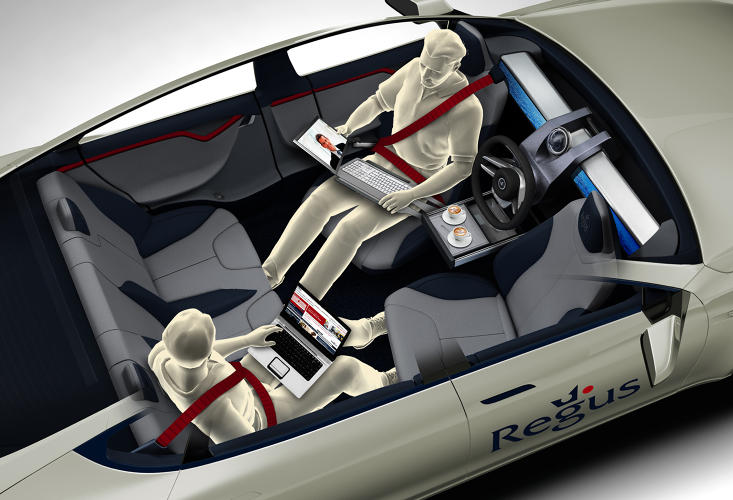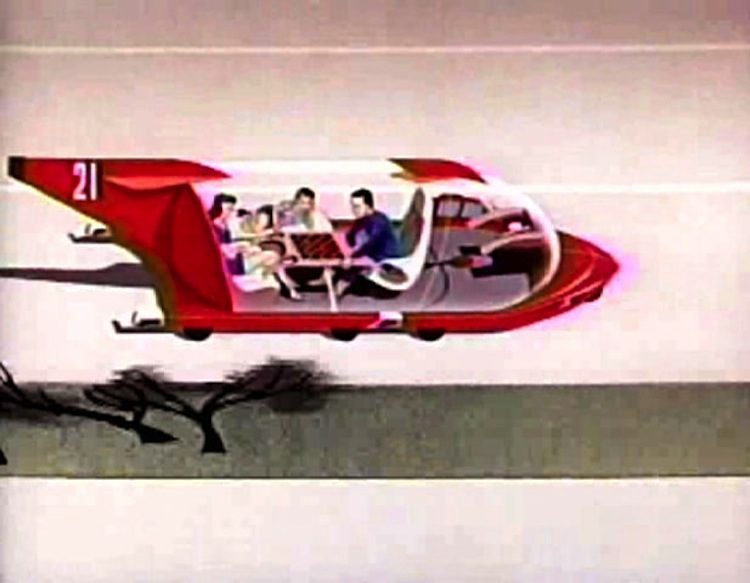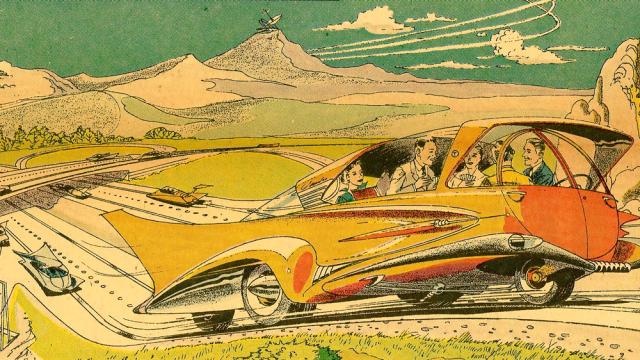Back in the 1950s and ’60s, self-driving cars represented the fantastic life of luxury that was supposed to be just around the corner. But here in the 21st century we can’t even pretend that our driverless cars of the future will be filled with board games and light reading. No, our self-driving car of tomorrow will be for one thing: work.
As Fast Company puts it, our traffic jams of tomorrow “will become a lot more productive,” thanks to the amazing advances of 21st century technology — technology that will allow us to be better workers, rather than more relaxed and happy human beings.
The magazine has a post about Regus and its self-driving concept vehicle (illustrated below) which will be on display at the Geneva Motor Show next month. As you can see, Regus believes that every second of your commute should be as productive as possible. Don’t even think about wasting time listening to the radio.

“Right now, many of us suffer through long, traffic-plagued commutes to and from work, the airport, or client meetings. It’s just dead-time when you aren’t doing much,” a VP at Regus told Fast Company.
But that VP is selling the futurist fallacy we’ve been hearing for over a century, the idea that technology will enable humans to be more productive, thus providing more time for leisure.
“If the XchangE [autonomous concept vehicle] helps people get their work completed or their deal struck while they’re travelling from one place to another, then that’s less work they have to take home with them,” the VP explained.
Yeah, we’ve heard that one before.

Back in the 1950s all of the office’s technological advancements were supposed to to give the worker of the future a little room to breathe. Especially during what was ostensibly off-hours. That meant that the self-driving car would be a safe haven, not another venue for productivity.
The February 22, 1959 edition of Arthur Radebaugh’s Sunday comic strip “Closer Than We Think” (top image) tackled the issue of self-driving cars. And Radebaugh’s strip was explicit about what the driverless car would afford us: more leisure.
“The day when we can play cards or take a nap while driving is closer than we think!” the strip proclaimed.
The print ad above from 1957 showed a similar scene. The family of the future will be able to play a board game or simply have a pleasant chat since no one has to keep an eye on the road.

Disney also imagined a world of self-driving cars, with a heavy emphasis on leisure. The May 14, 1958 episode of the Disneyland TV series (before it would become known as Walt Disney’s Wonderful World of Colour) looked at the history and future of transportation. Titled “Magic Highway USA” the episode’s last 10 minutes included the fabulous future of driverless vehicles, complete with a game of checkers.
“As father chooses the route in advance on a push-button selector, electronics take over complete control,” the narrator says. “Progress can be accurately checked on a synchronised scanning map. With no driving responsibility, the family relaxes together.”
But even the creators of Magic Highway understood that some amount of work would be happening in the driverless cars of tomorrow. Below, we see a video conference conducted right in the car. Or as the narrator puts it “en route business conferences are conducted by television.”

But maybe these visions of productivity (both old and new) aren’t all bad. Some people of the 1950s and 60s were worried that we’d have too much leisure in the future. So much leisure time that we’d want to literally die.
“Mankind’s major struggle [in the future] will be against boredom,” an article in the January 4, 1959 issue of Parade magazine claimed, “with the suicide rate zooming as people lose the race.”
Whatever role the driverless car ultimately plays in our future — whether it’s a sanctuary filled with entertainment or just another extension of our work life — it’s pretty safe to bet that it won’t cause a spike in the suicide rate. At least not because of too much leisure time.
Images: February 22, 1959 edition of Closer Than We Think scan; Regus driving car mock-up via Fast Company; Family playing board games ad circa 1957 via Paleofuture.com; Magic Highway USA screenshots from the May 14, 1958 episode of the Disneyland TV series
